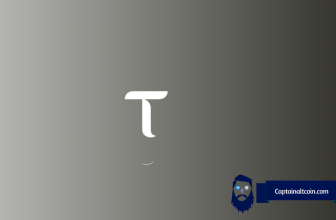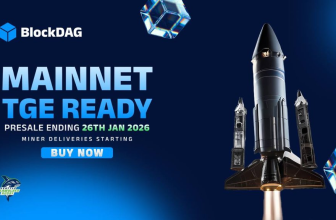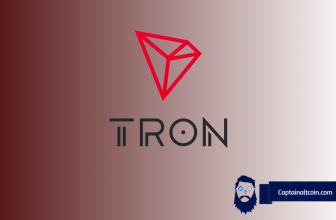

What you'll learn 👉
Data-centric vs. agent-centric structures
Blockchains in general offer quality solutions for creating, storing and sharing verifiable tamper proof data with the help of hashing and cryptography. The data varies from regular transaction data stored on Bitcoin blockchain and most other blockchains to data about contracts, images, audio etc. stored on other blockchains. However, these structures are seen as data-centric, meaning that they focus on creating a single, shared data identity among all nodes which support the structure. Typically we see these structures applied in blockchain technology.

A blockchain is supported by a network of nodes which maintain a consensus about one truth, one version of data. This consensus is protected and verified by network nodes using proof of work mechanisms; afte enough confirmations, it will become a part of the publicly available hash-chain of the network. While the ability of such systems to store and share verified and truthful data never comes into question, their scalability does represent an important issue. Having to constantly wait for data to be verified by the entire network is stopping the commercial application of blockchain technology.
?Read here how to buy Ethereum.
A solution is offered in form of agent-centric structures. In data-centric structures mining nodes are forced to choose and verify a single block of transactions among many variants on offer and add that block onto a globally shared chain. The more nodes and more transactions we add into such a system, the slower it becomes. Agent-centric systems focus on allowing nodes to share independently evolving data realities, with each node maintaining its own version of history. There is no forced consensus over the whole network and every node on the network can upgrade its hash-chain as it seems fit.
What is Holochain?
Developers of the Holochain compare its product to a hologram. A hologram is a whole image created from a bunch of individual light beams shining and emitting light. Similarly, Holochain is an agent-centric, distributed, Ethereum-based computing platform that addresses the issues of data-centric blockchains and offers a scalable way forward. It allows developers to build applications on top of a decentralized, peer-to-peer network customized for their needs.

Holochain has a hash-chain, just like any regular blockchain-based network. However, the network is structured in a way where every agent, every node on it has its own hash-chain. Every action the agent undertakes, every piece of data he creates will be stored on his personal hash-chain. These personal chains are then managed and stored in a limited way on the public network blockchain. Such an approach creates a very scalable environment that offers much more than its traditional counterparts. The principles on which Holochain resides can be seen in networks like git, with the addition that Holochain has signatures. Everything a node authors will be signed by its private signature.
Such a system design means that individual nodes don’t have to maintain a running record of the public blockchain. Instead, an agent will maintain his own blockchain that will interact with the main public blockchain with the help of his private signature, his cryptographic key. This system of multiple separate units working together to form a functioning whole is why the project is compared to a hologram, as mentioned before. In theory, if enough nodes are present, the number of transactions that Holochain network could handle can be unlimited.
An important element of this system is something called a distributed hash table.

Such a table is used to verify the data if individual blockchains and add it to the public blockchain. Usually a node needs to be online for it to have access to the public blockchain and be able to add data to it. However, a node sometimes goes offline, meaning that its data becomes inaccessible. This is where the distributed hash table comes into play. The data on individual blockchains is kept in a limited state on other individual blockchains of the network. If a node goes offline at some point, the limited data can be accessed from any other individual chain and verified on the public blockchain.
?HitBTC is one of the largest cryptocurrency exchanges. Read our HitBTC review here.
The third thing that is an important part of the Holochain is the distributed validation of content. If a malicious node was to attempt hacking the system and creating invalid transactions, he would modify his piece of the Holochain software and start sending invalid pieces of data to other individual blockchains. Every other node will start running validation rules before accepting the data. The development team calls their code the DNA of the system, and validation rules are the core of that DNA. The malicious node will be running different validation rules as it won’t be using the original code present in regular nodes. In a sense, anyone who tampers with the original code will basically hard fork their chain off the network.
The validating node will now notice that the data isn’t valid. The data is rejected, and since each piece of data is marked with its nodes signature, it will be easy to trace the malicious node, share its signature with other regular nodes and forbid the intruder from further accessing the system. Not all the users have to be forbidden, as the network is agent-centric: vouching from other nodes, POW/POS mechanisms, having different reputations on different apps are all possible with Holochain. Holochain developers refer to this as the “immunesystem” of their network.

The systems DNA comparisons are confirmed by the development team which says the following on the Holochain website:
“Where is the English language stored? Every speaker carries it. People have different areas of expertise or exposure to different slang or specialized vocabularies. Nobody has a complete copy, nor is anyone’s version exactly the same as anyone else, If you disappeared half of the English speakers, it would not degrade the language much.”
Holochain Dapps
Everything that is created on top of the Holochain network is an app. Every new app has its own DNA which becomes a part of the central network. Every node on the network can install/run multiple apps, thus becoming “fluent” in them (hence the language metaphor). Holochain is a part of the Ethereum blockchain and every new Dapp is created with a new smart contract.

Multiple apps, their DNA and multiple agents
The platform itself is suitable for various types of apps, including social media platforms, supply chain management, cooperatives, peer-to-peer platforms, collective intelligence and reputational/mutual credit cryptocurrencies. Anonymity focused or data-heavy applications won’t have the best time on Holochain, due to the open nature of the distributed table.
Holochain is written in Go. Dapps written for it are written in JavaScript or Lisp with support of front end systems using CSS, HTML and JavaScript. Apparently the devs are looking into including additional language support for their Dapp developers. Due to its low memory nature and use of Ethereum’s blockchain, Holochain will be an extremely environmentally friendly network.
HOT token
An ICO was recently held by the Holochain team, signaling their readiness to get their tokens into the hands of the people. It ran from 29 March 2018 at 10:00 a.m. GMT to 28 April 2018 at 10:00 a.m. GMT. A total of 133,214,575,156 HOT tokens were minted as the running fuel of the Holo platform. The token supply may seem massive, but it’s backed by the amount of distributed computing that the network will be able to provide (the number of HoloPorts and developer events sold through the crowdfunding campaign). Since the campaign outdid the initially set goals by 268%, the supply is a bit bigger than expected. The supply was variable during the ICO, as per developers’ instructions:
“Each day’s sales of hosting boxes and developer events expand the supply of tokens according to a fixed formula. This means the total token supply is not determined in advance. Once per day, the newly released amount of HoloTokens will be written to the blockchain enabling further token sales.”

At the close of the ICO, 33.3% more HoloTokens than were purchased were minted for the Holo organization and team, such that 25% of all tokens are held by the organization and team, and 75% are held by the community. This means that the total supply of the token is currently sitting at 177,619,433,541 HOT. Pretty large amount of tokens that won’t let this one reach even single digit dollar value anytime soon.

HOT is an ERC20 token storable in any Ethereum compatible wallet. It can be purchased on smaller markets like IDEX, Hotbit, Fatbtc and Radar Relay.
Team
Co-founded by Arthur Brock and Eric Harris-Brown, the project has grown into a community of “passionate humans building a distributed generalized computing platform”. With many blockchain, tech and finance veterans on board they look well set for the rigors of creating and maintaining your own cryptocurrency.
Roadmap and Future
While no actual roadmap has been released, a neat feature is the “public events for Holo and Holochain” section of the Holochain website which informs users of future meetups, speeches and workshops the team has in store.
The Holochain and HOT token are a part of the Holo project, which was designed to create a more human internet which allows people to control their own data and applications they wish to use. An Indiegogo campaign was held for this project which collected almost a million dollars through sales of HoloPorts, preconfigured hosting nodes for the Holo network. The network will eventually have its own blockchain and its own native coin, which will replace the current ERC20 one.
Useful links to follow future developments:







